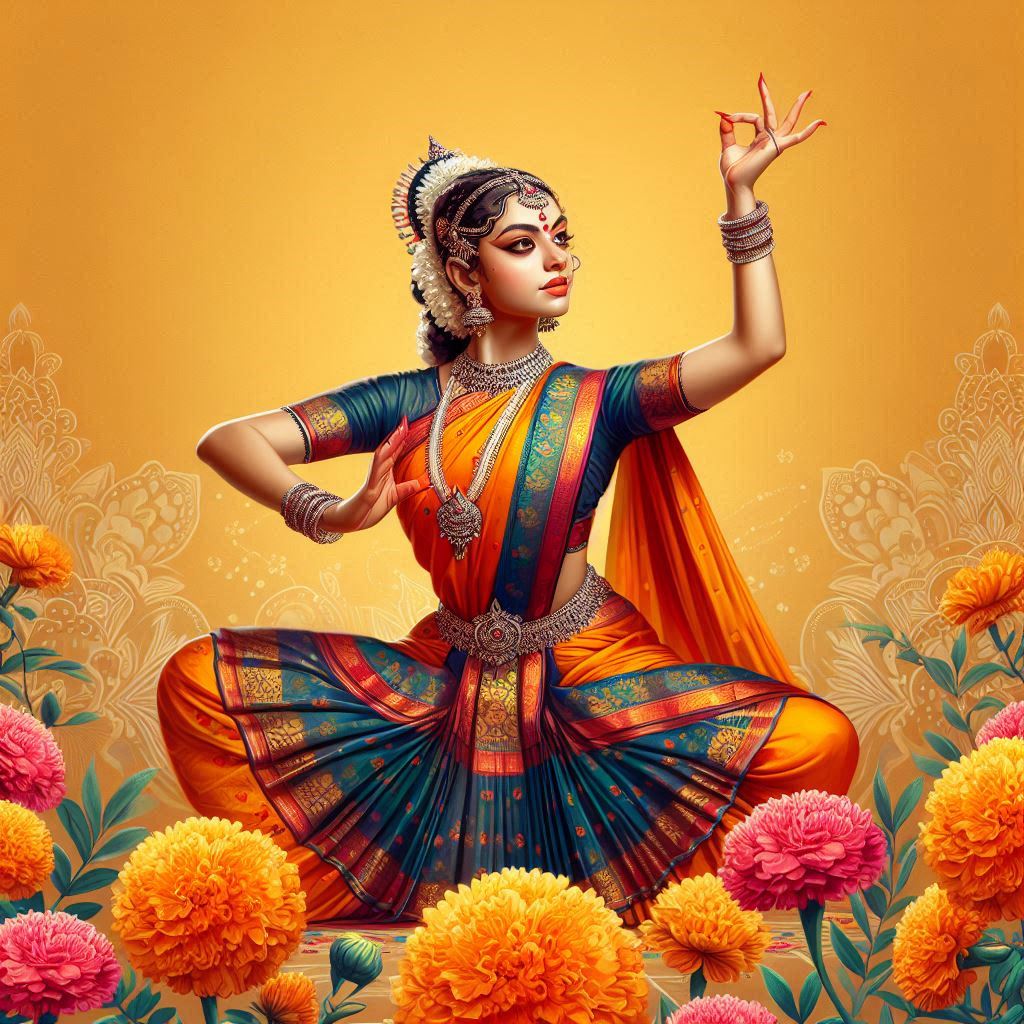CLASSICAL DANCES OF INDIA
Dance and the Eight Classical Dances of India
Dance is an ancient and universal form of expression that transcends cultural and linguistic boundaries. It combines rhythm, movement, and music, enabling individuals to communicate emotions, tell stories, and celebrate life. In India, dance is deeply intertwined with spirituality, mythology, and cultural heritage, embodying not just entertainment but also devotion and artistry. Indian classical dance, with its roots dating back thousands of years, is particularly revered for its sophistication, precision, and symbolic depth. This essay explores the essence of dance and provides an overview of the eight classical dance forms of India, each with unique cultural and historical significance.
The Essence of Dance
At its core, dance is a language of the body, where movement speaks what words cannot express. Dance has been a vital part of rituals, celebrations, and social gatherings across societies. Indian classical dance stands out for its intricate techniques, disciplined practice, and expression of spiritual themes, encapsulating India’s diverse cultural tapestry. Classical dance in India has traditionally been seen as a medium for connecting the earthly with the divine, often performed in temples as an offering to gods. Through precise hand gestures (mudras), facial expressions, postures, and footwork, dancers convey complex emotions and narratives, drawing the audience into a shared experience.
In India, dance is not merely an art form but also a path of devotion, with many dances inspired by Hindu gods and mythological tales. Bharat Muni’s Natya Shastra, an ancient Sanskrit text, serves as the foundational treatise on dance, music, and drama. It describes the theory, purpose, and techniques of dance and is a guiding source for all classical Indian dance forms.
The Eight Classical Dances of India
India’s Ministry of Culture officially recognizes eight classical dance forms, each rooted in distinct regions and histories. These dance forms are Bharatnatyam, Kathak, Kathakali, Kuchipudi, Odissi, Manipuri, Mohiniyattam, and Sattriya. Let’s delve into each of these dance styles and their unique characteristics.
1. Bharatnatyam (Tamil Nadu)
Bharatnatyam is one of India’s oldest dance forms, originating from Tamil Nadu. It is known for its fixed upper torso, bent legs, intricate footwork, expressive gestures, and complex facial expressions. Bharatnatyam is often seen as a form of spiritual worship and draws heavily on themes from Hindu mythology, particularly the stories of Shiva and Vishnu.
2. Kathak (Uttar Pradesh)
Kathak originated in the northern part of India, notably Uttar Pradesh, and is unique for its storytelling aspect, which is actually what its name, derived from “katha” (story), suggests. Kathak is known for its rapid spins, intricate footwork, and dramatic use of facial expressions and hand gestures. It was originally performed in temples but later flourished under Mughal patronage, blending Hindu and Islamic cultural elements.
3. Kathakali (Kerala)
Kathakali is a classical dance-drama from Kerala characterized by elaborate costumes, vibrant makeup, and expressive facial expressions. It combines dance with drama and is performed with larger-than-life characters depicting stories from Hindu epics like the Ramayana and Mahabharata. Kathakali dancers undergo rigorous training, particularly in facial muscle control, to perform with highly stylized gestures and expressions.
4. Kuchipudi (Andhra Pradesh)
Kuchipudi, originating from Andhra Pradesh, combines dance, music, and drama. It has a distinctive storytelling approach, often blending singing and dancing. Kuchipudi dancers use intricate footwork, hand gestures, and facial expressions, sometimes even balancing on brass plates or pots to demonstrate their skill. This dance form often portrays scenes from Indian mythology, such as episodes from the life of Krishna.
5. Odissi (Odisha)
Odissi is a classical dance form from Odisha, known for its lyrical grace, sensuous movements, and intricate sculpturesque poses inspired by ancient temple art. Odissi was historically performed as part of temple rituals. The dance is fluid and soft, focusing on the tribhanga (three bends of the body) and various mudras that express devotion and love for deities, especially Lord Jagannath, the patron deity of Odisha.
6. Manipuri (Manipur)
Manipuri, as the name suggests, originates from Manipur in northeastern India and is characterized by soft, flowing movements. Unlike other classical dances, Manipuri does not focus on sharp footwork but emphasizes graceful body movements. Manipuri dances are closely tied to themes of Vaishnavism (worship of Vishnu) and often depict episodes from the life of Krishna, particularly the Ras Leela (dance of Krishna with the gopis).
7. Mohiniyattam (Kerala)
Mohiniyattam, also from Kerala, is a dance form performed traditionally by women. Known for its graceful, swaying movements, Mohiniyattam embodies the essence of femininity and beauty. The name “Mohiniyattam” translates to the dance of the enchantress, and the style is closely associated with the Hindu goddess Mohini, an avatar of Vishnu. The dance form emphasizes soft gestures and expressions, creating an almost ethereal quality.
8. Sattriya (Assam)
Sattriya, a relatively newer inclusion among classical dances, originates from Assam and is deeply linked to the Vaishnavite monasteries (sattras) established by the saint Sankardeva. Sattriya is both a dance-drama and a ritual, depicting stories from the epics and the life of Krishna. Dancers wear traditional Assamese attire, and the dance is characterized by its energetic footwork and use of storytelling.
Conclusion
The eight classical dances of India represent the nation’s diverse cultural landscape, reflecting regional aesthetics, religious devotion, and historical narratives. Each form has developed its own set of techniques, costumes, and music, embodying the distinct cultural identity of its place of origin. Together, these classical dances are a testament to India’s rich artistic heritage and continue to inspire generations, celebrating both the beauty of dance and the timeless stories of Indian mythology and tradition.
